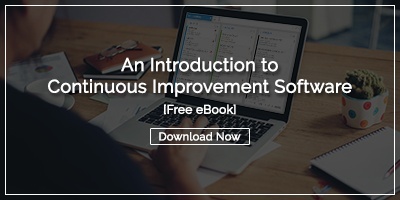 Kaizen events are an excellent way to take quick action to tackle a difficult or long-standing problem. When used along with daily incremental improvement, they can lead to positive changes with measurable impact. However, the devil is in the details, and poor execution can lead to confusion and poor decision making, potentially making matters worse than they were in the beginning.
Kaizen events are an excellent way to take quick action to tackle a difficult or long-standing problem. When used along with daily incremental improvement, they can lead to positive changes with measurable impact. However, the devil is in the details, and poor execution can lead to confusion and poor decision making, potentially making matters worse than they were in the beginning.
We’ve had the chance to chat with lots of folks who’ve run Kaizen events - some with great success, others with a list of lessons learned. Here are their best tips for a Kaizen event that gets results.
Deploy Kaizen Events Wisely
The outcome of your event will primarily be determined by what type of process or problem you intend to address. Not all improvement projects are suitable for a rapid improvement event. Before the planning begins, ask yourself if it is reasonable to believe that this problem can be addressed in a three- to five-day timeframe. Many process improvements can be implemented that quickly, but some complex or widespread issues can’t. Be realistic about the scope of the problem. (This post contains more detail about choosing the best moments for a Kaizen event.)
Assemble a Winning Team
Filling a few roles on your Kaizen event team is essential. A skilled facilitator is necessary to make sure that progress is made, that everyone is coordinated, and that the required resources are available. You can choose someone on your staff with experience, or even hire a professional Kaizen event coordinator. Most Kaizen event teams also include subject matter experts who can lend their insight, especially during the “analyze” stage of the improvement cycle. It is also essential to include the people who perform the work of the targeted process on the team. They will be able to help map the current state and will ultimately be responsible for implementing the new workflow. You may also want to include people from other functional areas who are suppliers to or customers of the process. Finally, an executive sponsor can ensure that the team has what it needs to succeed.
Have a Solid Roadmap and Clear Goals
Many teams create a project charter for their Kaizen events. Although this isn’t a requirement, it is essential to have a plan of action and defined, measurable markers for success. Typically, the first part of the event is spent validating the current standard work and identifying the trouble spots in the process. Once that is complete, it is possible to contemplate potential solutions. All of that should be done in the context of what business results you are trying to achieve. This is an excellent time to work on SMART goals (Specific, Measurable, Attainable, Realistic, and Timely.)
Choose the Right Tools for the Job
Every Kaizen event is different, of course, so you’ll need to think about which tools are best for the current situation, but there are a few old standbys that you’ll likely use for most events. They include:
- Kaizen Event Software – A central repository for all documents, discussions, tasks, and measurements will significantly increase the likelihood that the team will achieve its objectives. Notifications and alerts help everyone stay in sync and dashboards make it easy for leaders to monitor progress and provide early help if needed.
- DMAIC – The DMAIC improvement cycle is an ideal way to organize the Kaizen event. It sets the structure for thoughtful and lasting improvement. (More on DMAIC here.)
- The 5 Whys – During the Analyze phase of the DMAIC cycle, the 5 Whys technique of problem-solving and root cause identification can result in breakthrough insights and innovation.
Measure and Share the Results
We mentioned the importance of defining success, but we should add that there must be predetermined ways to measure the impact of your event and a regular cadence for following up. You might calculate cost savings, for example, immediately following the event and then every month for the next quarter or year. It is also critical to share the results of a successful event far and wide. The improvement mindset is something that you want to spread far and wide. One way to make this a natural part of all improvement work is to choose a software platform with built-in improvement broadcasting.
Prepare for the Next Success
The last piece of advice we have is to use every Kaizen event to better prepare your organization for the next one. Document what went well and what didn’t. Ask participants for input on how to make the next effort even more successful. Add as much information as you can to the organization’s repository of knowledge so that each Kaizen event is incrementally better than the last.




Add a Comment